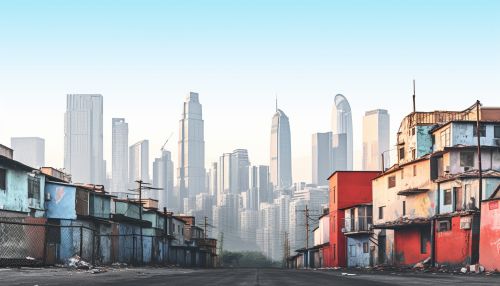Inequality
Introduction
Inequality, in its broadest sense, refers to the uneven distribution of resources, opportunities, and privileges among individuals or groups. It is a multifaceted concept that encompasses a wide range of social, economic, political, and cultural dimensions. Inequality can manifest in various forms, such as income, wealth, health, education, and gender disparities, among others. It is a pervasive issue that affects societies worldwide, influencing the quality of life, social cohesion, and the overall functioning of societies.
Types of Inequality
Economic Inequality
Economic inequality, often measured by income and wealth disparities, is a significant aspect of overall inequality. It refers to the gap between the rich and the poor, where wealth and income are not evenly distributed among the population. Economic inequality can be further divided into wage inequality, wealth inequality, and income inequality.
Social Inequality
Social inequality involves disparities in the distribution of social resources and opportunities. It includes inequalities in health, education, and access to services, among others. Social inequality often intersects with economic inequality, as those with lower economic status typically have less access to social resources.
Political Inequality
Political inequality refers to the unequal distribution of political power and influence. It can manifest in various ways, such as unequal representation in political institutions, disparities in political participation, and unequal access to political information.
Cultural Inequality
Cultural inequality involves disparities in cultural resources, such as knowledge, skills, and cultural capital. It also includes inequalities in the recognition and valuation of different cultures, leading to cultural dominance and marginalization.
Causes of Inequality
Inequality is a complex phenomenon with multiple interrelated causes. These can include structural factors, such as economic systems and political institutions, and individual factors, such as education and skills. It is also influenced by historical, social, and cultural contexts.
Structural Factors
Structural factors refer to the overarching economic, political, and social systems that shape the distribution of resources and opportunities. These can include economic policies, political structures, and social norms, among others.
Individual Factors
Individual factors involve personal attributes and circumstances that can influence one's access to resources and opportunities. These can include education, skills, health status, and social connections, among others.
Effects of Inequality
Inequality can have wide-ranging effects on individuals and societies. It can impact economic growth, social cohesion, health outcomes, and political stability, among others.
Economic Effects
Inequality can influence economic growth and development. High levels of inequality can hinder economic growth by limiting access to education and opportunities, reducing social mobility, and increasing social tensions.
Social Effects
Inequality can affect social cohesion and stability. It can lead to social exclusion and marginalization, increase social tensions, and undermine social trust and cooperation.
Health Effects
Inequality can have significant impacts on health outcomes. Those with lower socioeconomic status often have poorer health outcomes due to limited access to healthcare, unhealthy living conditions, and higher levels of stress.
Political Effects
Inequality can influence political stability and democracy. High levels of inequality can lead to political unrest, undermine democratic processes, and increase the risk of conflict.
Addressing Inequality
Addressing inequality requires comprehensive and multifaceted approaches. These can include economic policies, social interventions, political reforms, and cultural changes.
Economic Policies
Economic policies can play a crucial role in addressing economic inequality. These can include progressive taxation, wage policies, and social protection measures, among others.
Social Interventions
Social interventions can help address social inequality. These can involve improving access to education and healthcare, promoting social inclusion, and enhancing social mobility.
Political Reforms
Political reforms can help address political inequality. These can include promoting political participation, ensuring equal representation, and enhancing transparency and accountability.
Cultural Changes
Cultural changes can help address cultural inequality. These can involve promoting cultural diversity, challenging cultural biases, and fostering cultural understanding and respect.
See Also


